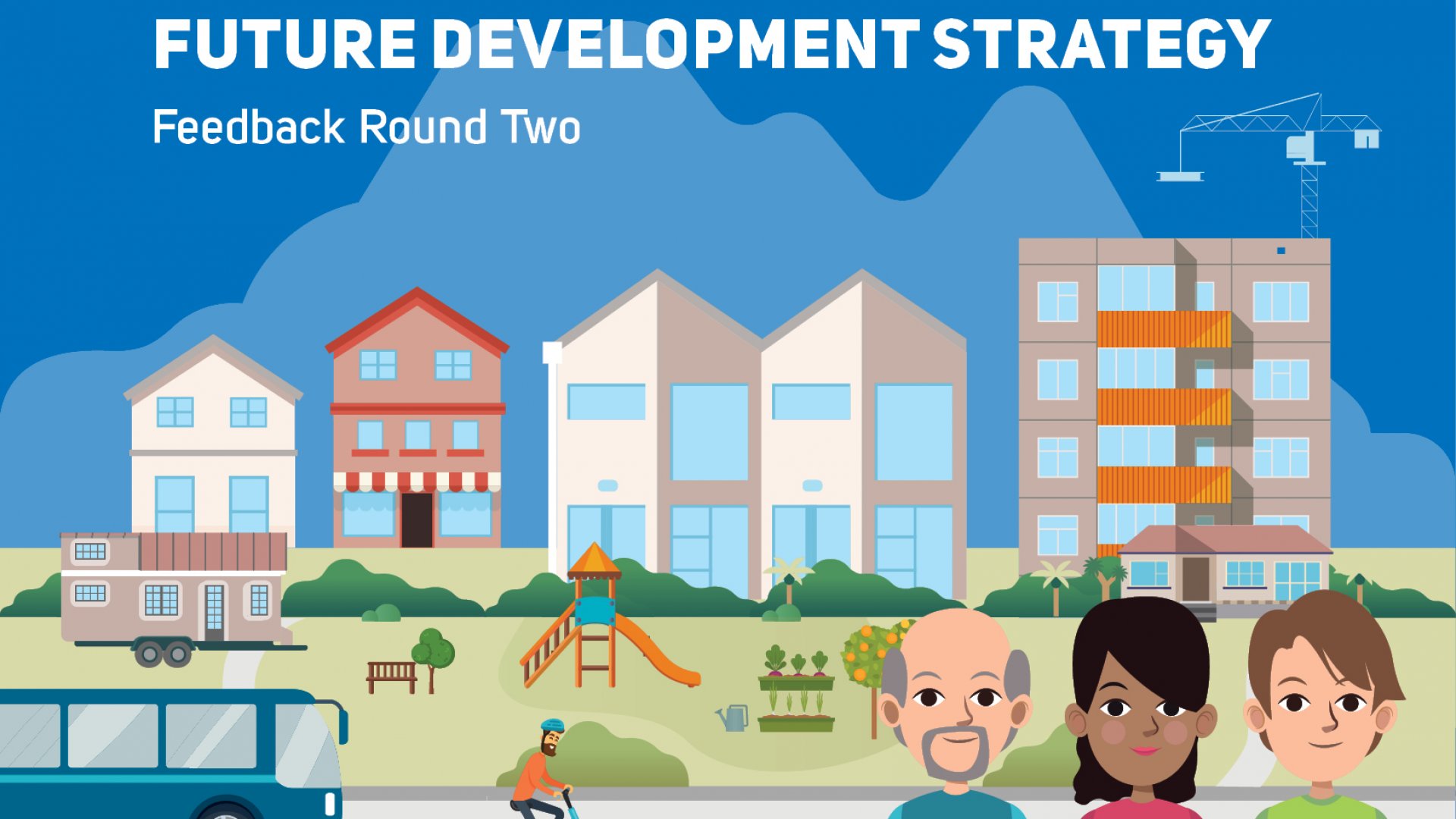Nelson-Tasman Future Development Strategy
09/04/2019 9:16am
The second round of feedback on the Nelson-Tasman Future Development Strategy (FDS) opened on 8 April.
Read the feedback document and have your say on the Nelson-Tasman Future Development Strategy Here
Find out more at a public drop-in session:
- Stoke Library on Friday 12 April from 2.30pm-4pm.
- Nelson Saturday Market on 13 April from 9am-1pm.
Growth forecasts vary but if we continue to experience high growth, Nelson - Tasman will need to find space for up to 12,000 extra homes over the next 30 years. Along with more houses we’ll need more shops, offices and commercial services.
Using the results of feedback on the FDS collected in January this year, the Councils have developed three potential growth scenarios which they will be seeking further feedback on.
The scenarios are not mutually exclusive and it is expected the final strategy will incorporate a mix of options. The three scenarios are:
Enabling housing choices, while avoiding areas that are likely to be subject to sea level rise
Enabling housing choices while avoiding land of high productive value
Balanced option: Enabling housing choices while taking into account both these constraints. Scenario 1: Enable housing choice while addressing sea level rise
Scenario 1 focuses development in areas that are both affordable to develop and not at risk of future sea level rise. Areas that may be subject to long-term sea-level rise are excluded, including parts of central Nelson, Tahunanui and Mapua.
About 40% of the future growth would be accommodated by intensification of existing populated areas such as Nelson South, Stoke, Richmond, Motueka, Brightwater and Wakefield. About 60% of growth would take place through expanding existing centres into outlying land in areas such as Kaka Valley (Maitai Valley area), Saxton, Richmond South, Brightwater and inland of Mapua and Motueka.
Scenario 2: Enable housing choice while protecting productive land
In scenario 2, development is focussed in areas that are affordable to develop, and that don’t require take-up of high-value productive land for housing. That means land south of Richmond, Brightwater, Mapua, coastal Tasman and Motueka has been excluded, as have possible development areas at Murchison and Takaka.
About 50% of growth would occur through intensification and 50% through expansion into areas such as Kaka Valley (Maitai Valley area), Pigeon Valley, Stringer Road and Seaton Valley.
Scenario 3: Balanced option
This scenario provides for a balance between providing enough land for housing, while avoiding areas at risk of sea-level rise or land with high productive value.
This scenario would allow development in some of the areas excluded under scenarios 2 and 3, such as:
Nelson city centre
Central Takaka and Murchison
· Richmond south
· Seaton Valley Flats
· Mariri Hills and Lower Moutere Hills
Under this option, about 30% of growth would be through intensification and 70% through expansion.
Nelson Mayor Rachel Reese says that she encourages everyone to have their say on this second round of feedback.
“The first round of feedback has helped us identify these scenarios. I’m keen now to hear what people think about these scenarios, and other ideas they may have. We need to take climate change into account, and to make sure we can accommodate the predicted growth through our zoning and infrastructure plans. This is our opportunity to build urban areas that work better for our community - our vision for a sustainable and liveable city and region can be achieved through careful planning now.”
Tasman Mayor Richard Kempthorne says once finalised, the Nelson Tasman Future Development Strategy will affect everyone who chooses to make the region their home in the next 30 years.
“It’s really important that people let us know how they feel about the three scenarios, where they would prefer to see future homes located, and what type of housing they think is appropriate in those places. We want the final strategy to reflect our community’s needs and aspirations for the future of the places they call home. We think it’s particularly important that young people in the region have a voice in the process, so we’ll be providing information at high schools through the Nelson and Tasman Youth Councils, and there is a youth survey specifically for 12 to 24 year olds to provide feedback.”
Background:
A Future Development Strategy that covers adjoining Council areas is encouraged under the National Policy Statement on Urban Development Capacity. Its purpose is to ensure that council’s zoning and infrastructure roll outs support projected housing and business growth.
The Strategy sits above and provides direction to Council’s other planning tools such as resource management plans and policy statements, infrastructure strategies, asset management plans, regional land transport plans and the Long Term Plan.
The feedback period runs from 8 April – 6 May. Feedback can be made through an interactive web map which will be available from 8 April online at nelson.govt.nz or tasman.govt.nz. Copies of the Future Development Strategy information brochure will be available at both Councils’ customer service centres and libraries.
Public drop-in sessions
Drop in sessions will be held in Nelson and Tasman:
Nelson Farmers market, Kirby Lane, Wednesday 10 April 9am-1pm
Stoke Library, Friday 12 April, 2.30pm-4pm
Nelson Saturday Market: Saturday 13 April, 9am-1pm, Montgomery Square, Nelson
Mapua: Monday 8 April, Bill Marris Room, Mapua Village Hall, 3.30 – 6 pm
Golden Bay: Tuesday 9 April. Takaka Service Centre meeting room, Commercial Street, 1 pm - 4 pm.
Moutere: Thursday 11 April, Moutere Hills Community Centre community room, Moutere Highway, 4 - 6.30 pm
Wakefield: Monday 15 April. St John’s Anglican Church lounge, Edward Street, 3.30 – 7.30 pm
Motueka: Tuesday 16 April, Tasman District Council office, Hickmott Street, 3 – 4 pm, 7 pm – 8.30 pm.
Brightwater: Thursday 18 April, Plunket Rooms, Ellis Street, 3.30 – 6 pm
Murchison: Tuesday 23 April, Murchison Emergency Services Incorporated, St John Ambulance, 102 Waller Street, 3.30 – 6.30 pm
Tasman: Wednesday 24 April, Tasman School hall, Aporo Road, 4 – 6 pm
Richmond: Monday 29 April, Richmond Mall, 12 – 5.30 pm
Kaiteriteri: Wednesday 1 May, Kaiteriteri Recreation Reserve, Ngaio Conference Room, 4 pm – 6 pm.
Tapawera: Friday 3 May, Tapawera Community Centre, 3.30 – 6.30 pm

